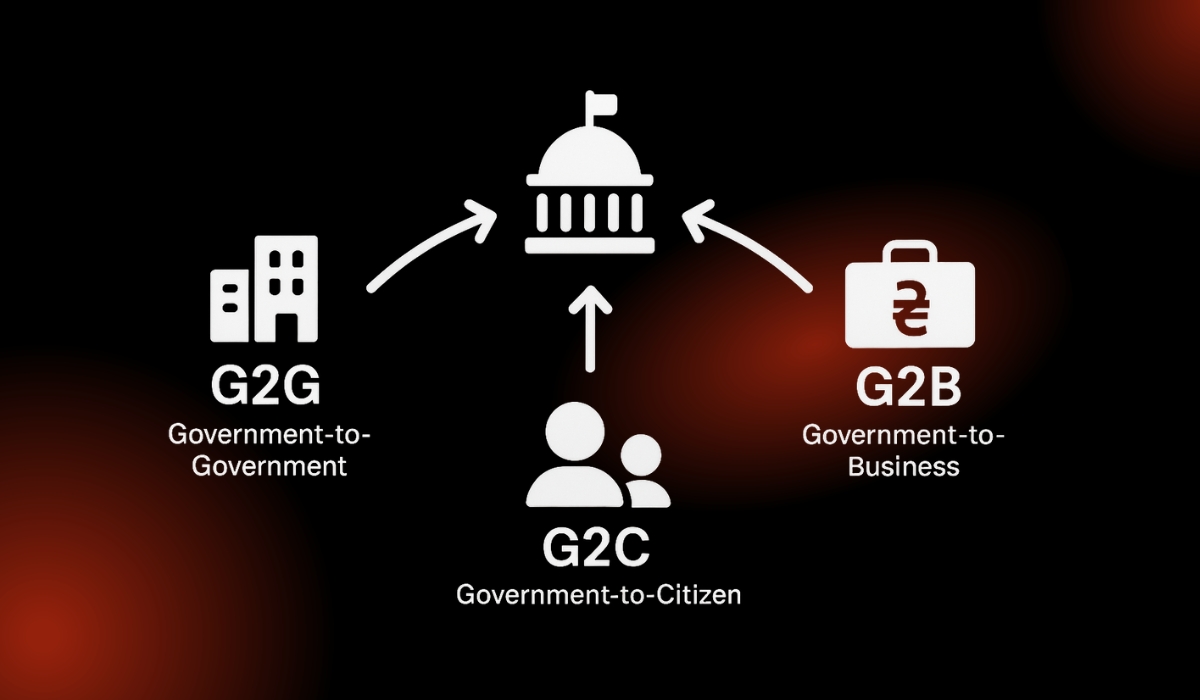Globalization, consumption, and trade continue to develop, so more and more attention is being paid to researching various business models.
The traditional types of e-commerce are B2C, B2B, C2C, and C2B—a lot has already been written about them, and we will not repeat information that is already well known. Instead, we suggest looking at the less common models of interaction: G2G, G2B, and G2C.
E-commerce has revolutionized the way businesses operate. Companies can now operate around the clock and provide consumers with up-to-date information about their products. The online shopping market, already significant, has grown substantially during the COVID-19 pandemic, with billions of people around the world choosing to buy goods and services online.
For business owners, this has opened up new opportunities in the development of e-commerce. With the advent of e-government, online interaction has taken on new forms. Let's take a closer look at them.
B2G (Business-to-Government)
The B2G model involves communication between businesses and government or public institutions. In this model, companies sell products, services, and information to governments or public institutions.
Unlike others, the B2G interaction model is complex and requires strict compliance with laws and business conditions due to oversight and intervention by state authorities. In most cases, state authorities prepare preliminary contracts, announce tenders, and invite businesses to participate in bidding.
Companies that meet the government's strict requirements calculate a commission and submit a project price. The government then reviews and selects the most suitable company, deciding to sign a B2G contract with it.
Examples: Most B2G businesses are private companies in various fields, ranging from mechanical engineering, electronic equipment, telecommunications, and infrastructure to arms trading or military defense systems development.
G2B (Government-to-Business)
G2B e-interaction is a model in which all information and services are provided to business organizations by the government. In this case, information is distributed mainly through a wide network of government websites.
Business organizations use this information to apply for various permits required to start a new business and other specifications. Businesses can also download various forms and submit them online or offline to the appropriate office.
The target audience in trade carried out under this model is businesses. An example of G2B interaction is government loans.
C2G (Citizens-to-Government)
C2G is a model in which citizens interact with the government. It covers online electronic transactions between individuals and government agencies.
The citizen-to-government e-interaction model allows consumers (citizens) to post feedback or request information about government services directly from government agencies or authorities. These transactions involve either requests for information or payments to the government.
For example, when you pay your electricity bills, tuition fees, health insurance, or taxes through a government website, that is C2G.
G2C (Government-to-Citizens)
G2C is electronic interaction between the government and the public. This model covers products and services that the government provides to citizens online.
E-government programs are one example. Consumers can access their personal information and perform various transactions through this system. E-commerce activities between the government and its citizens or consumers, including tax payments, land and vehicle registration, provision of information and services, registration of birth, marriage, or death certificates, and passport issuance, all fall under the G2C model.
G2G (Government-to-Government)
G2G refers to any electronic transfer of data and/or information systems between two or more government agencies, departments, or organizations.
Successful G2G has the necessary resources for cooperation and communication between government agencies to better serve citizens. The goal of G2G is to support e-government initiatives by improving communication, data access, and data exchange.
Relationships may involve information and data exchange, business relationships, or may describe an ICT solution that facilitates communication between two government agencies (document exchange, sharing of government registries, cadastral system, etc.). For example, transactions between a local central bank and the European Central Bank are covered by the G2G business model.
From the perspective of a developer of technical solutions for various models of interaction with the state, the key tasks are to ensure fast and secure transmission of large amounts of data, in which both parties to the interaction will have convenient access to the necessary functions and will be confident in the confidentiality of the data. Medirent develops precisely such platforms.







